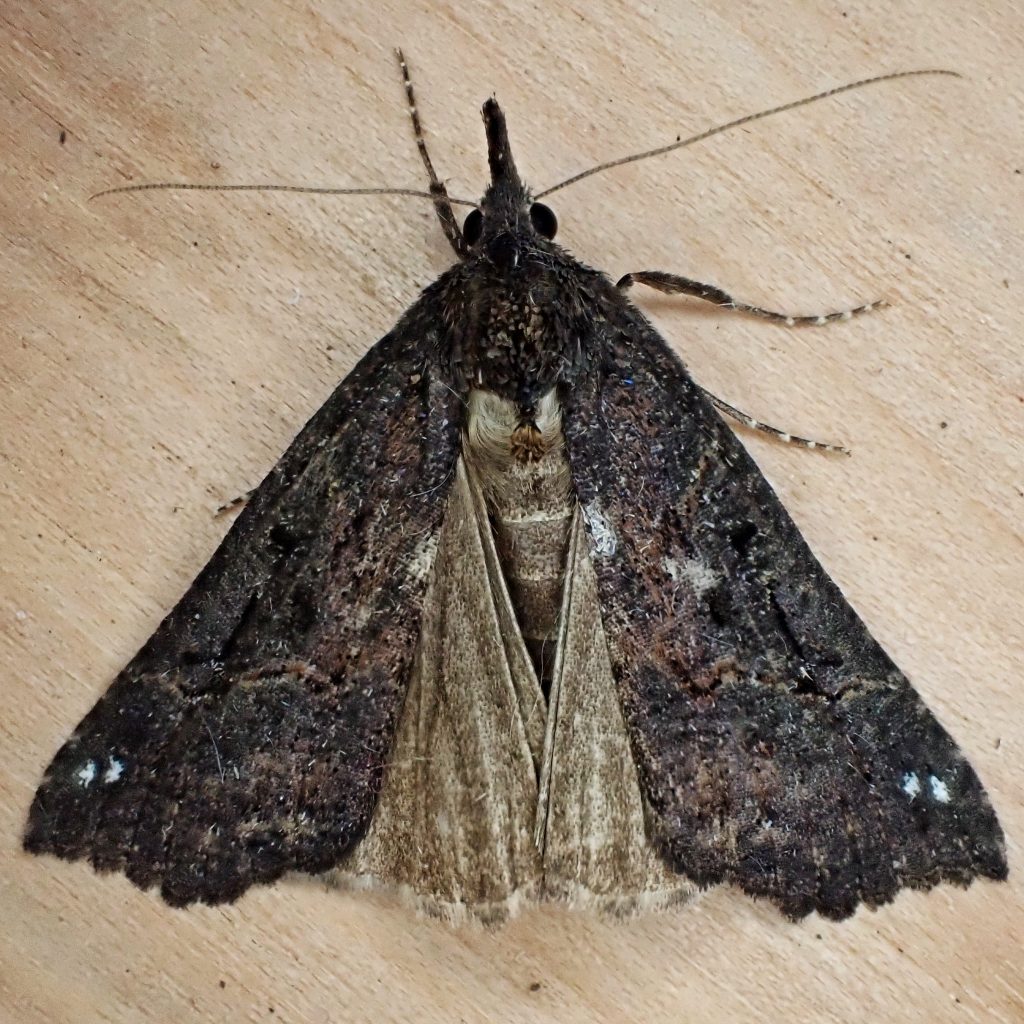
This was a brand new Hypena sp. for me, a group of Erebidae moths with the common name of snout moths. This one is sometimes called the decorated snout moth, but this is a mistranslation of decorata, which means elegant/graceful/ beautiful in Latin. According to Moths of the PNW this species is uncommon to rare, which is interesting since their primary larval hosts are nettles, of which we have an abundance. But I have set up lights in many nettle rich areas, and this is the first one I’ve seen, though I have found 4 of the other 8 species of Hypena we have in our region.
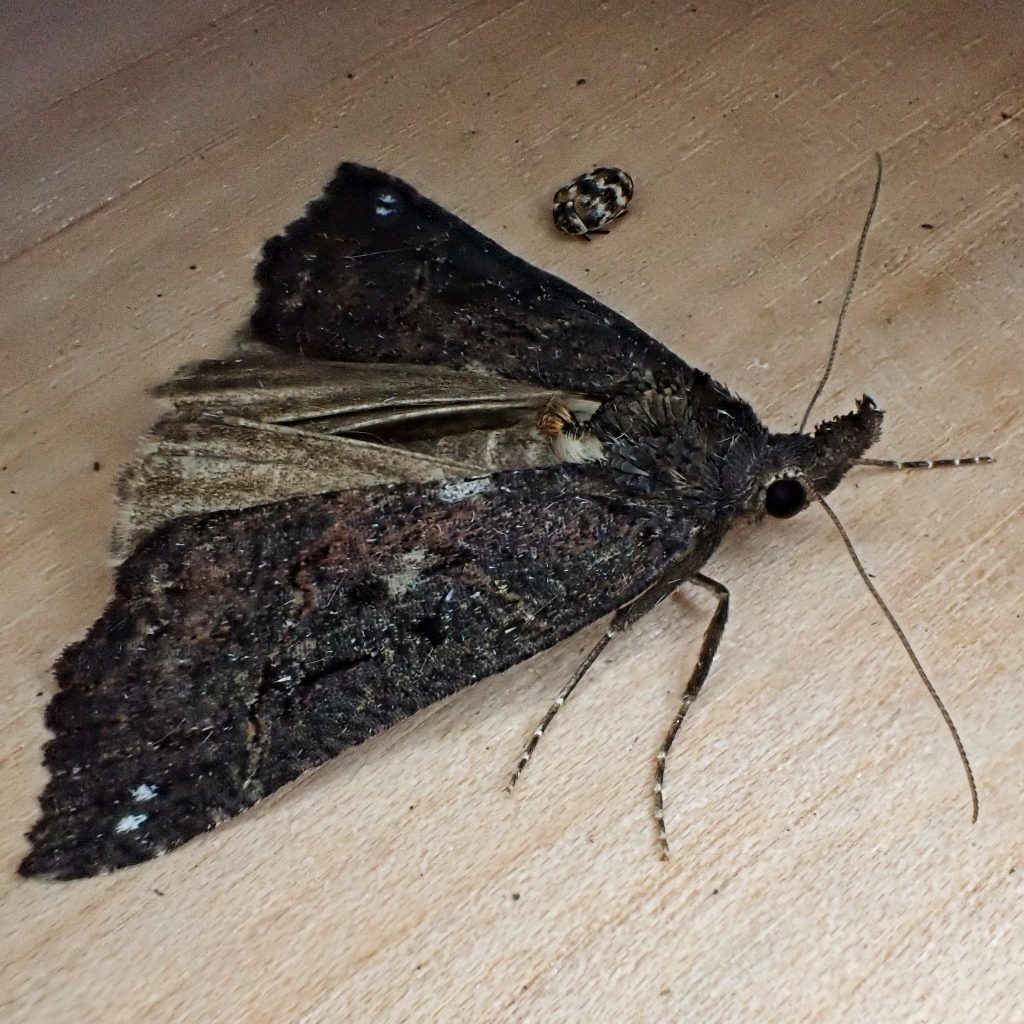
When this moth came into my lights I knew right away that it was a new species for me. And because it looked like some type of Hypena, a flighty and difficult to photograph species in my experience, I collected it to be chilled and photographed at home. However, once I found out it was uncommon, I wasn’t completely comfortable with releasing it on our porch, even though there are nettles in the neighbor’s unmanicured back lot, since it didn’t seem likely that there would be a female with which to breed. In the end I decided to hope that it’s somewhat frayed appearance was indicative that it had lived long enough to pass on its genetic material, and that it’s freedom was better than the high probability of mortality if I left it in the fridge until my next day off. So I wished it luck and turned it loose.
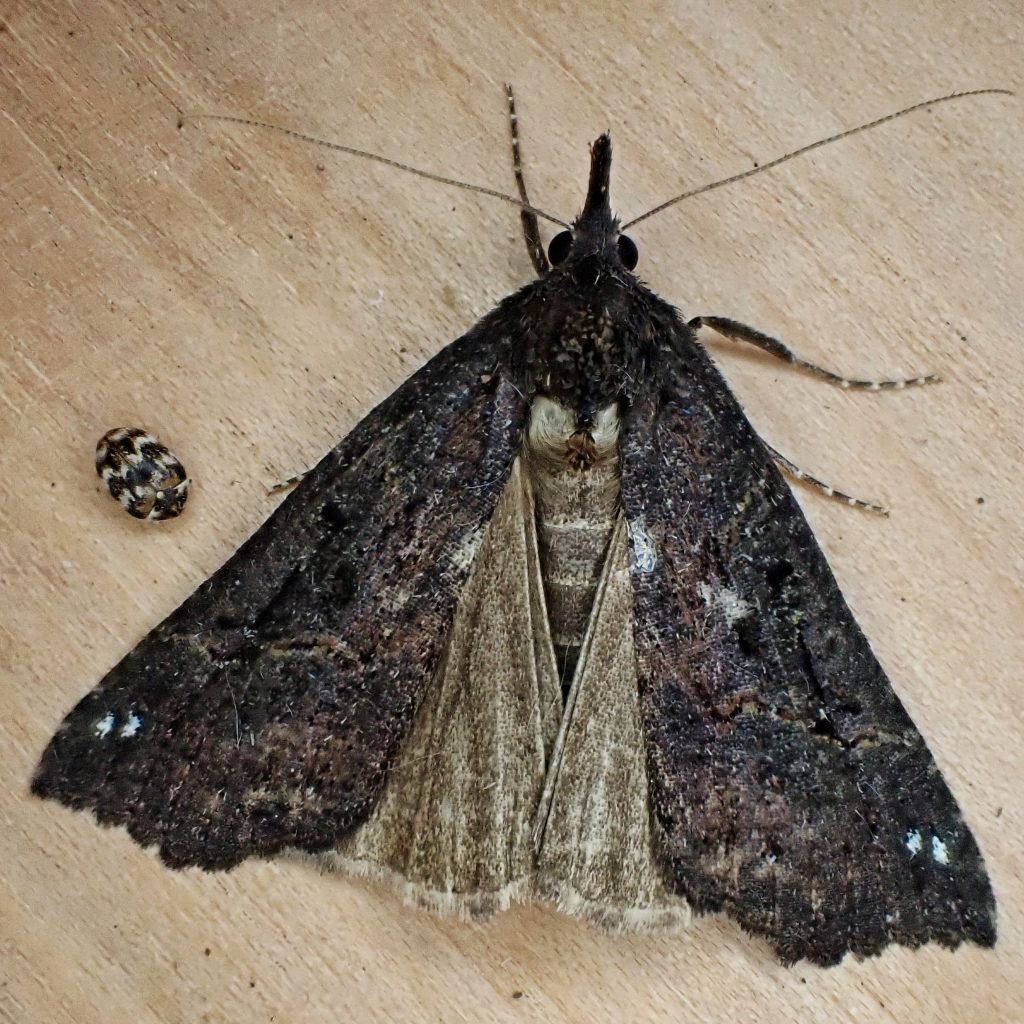
Possibly because it is uncommon we know very little about the life history of Hypena decorata beyond the facts that the larvae eat nettles. We know adults fly in the spring and fall, but we don’t know if that is because there are two broods, there are delayed eclosures, or if adults eclose in the fall and overwinter to emerge in the spring. And we don’t know why, in a nettle rich country, it would be uncommon to rare. Is it outcompeted by the abundant H. californica, which is also a nettle specialist? And, since they both utilize the same larval host, is one species descended from the other? Inquiring minds want to know.
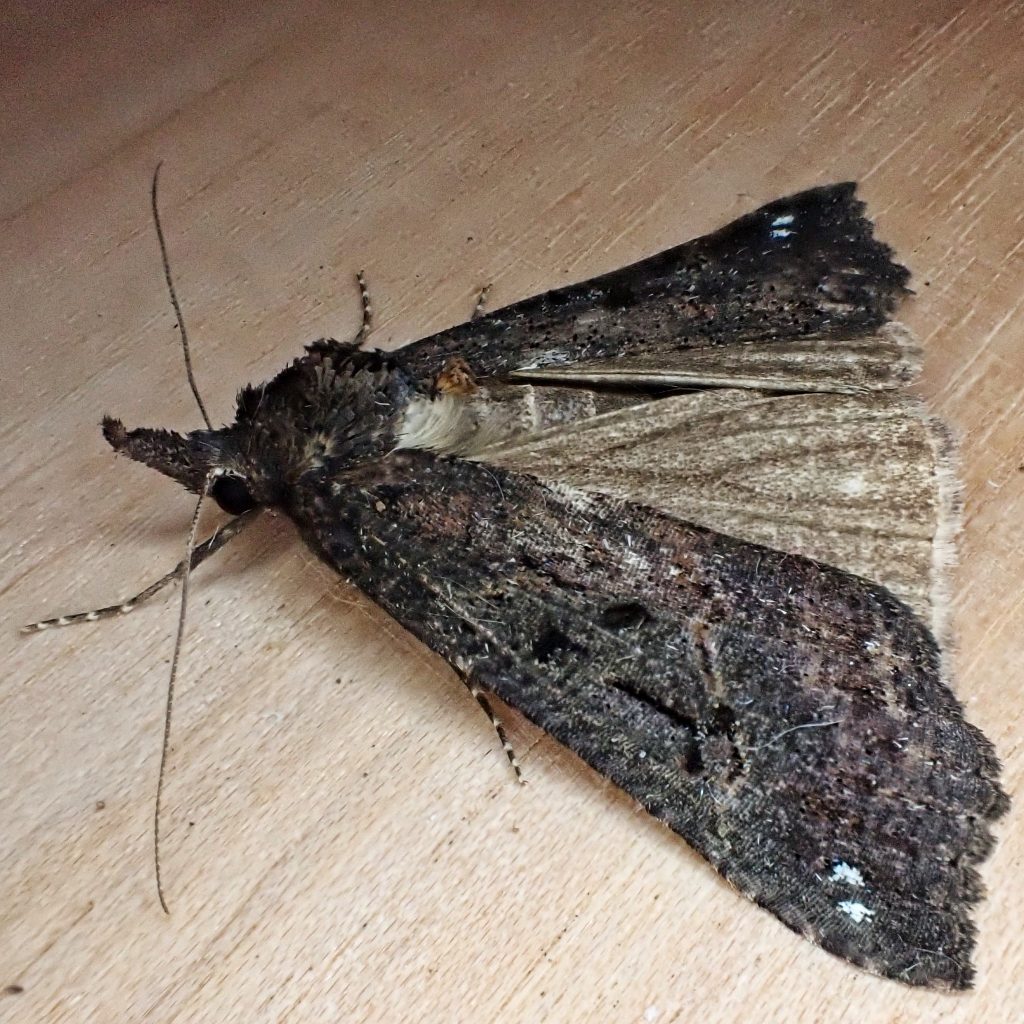
Description-Sexually dimorphic; medium sized (fw length 15-18mm) with long, relatively narrow, slightly hook tipped forewings; males are bigger, with brown wings and two white dots near the apex; female has wings mottled gray and brown, and lacks apical spots; both sexes have black orbicular and reniform spots, and the reniform spot is connected to a black bar; the postmedial line is dark, mostly flat below the reniform spot; the hindwing is yellowish grey, with a faint discal spot and veining.
Similar species– H. humuli has a wavy postmedial line that dips below the reniform spot; H. californica has a postmedial line that angles obliquely toward the wing apex.
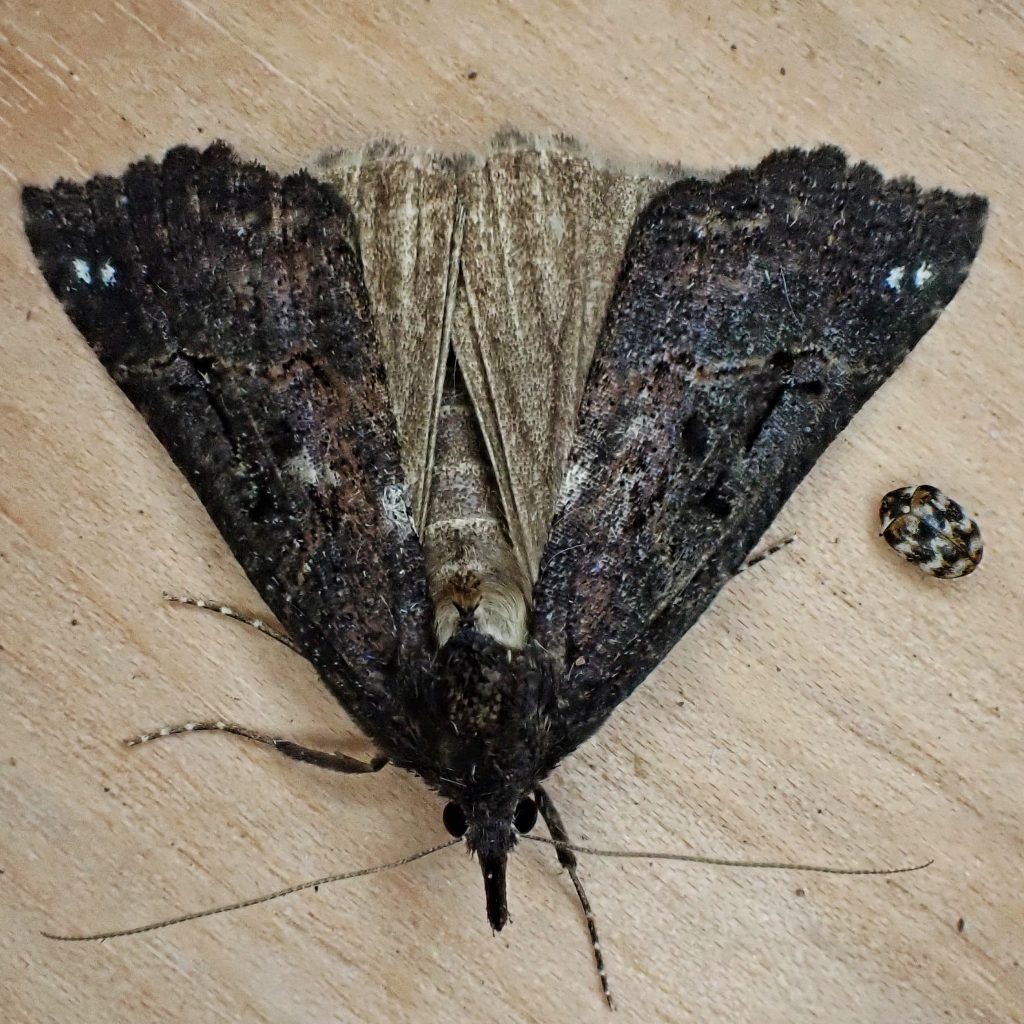
Habitat– Moist to mesic deciduous and mixed forests, and along wetlands and riparian corridors.
Range-West Coast endemic; primarily found west of the Cascades, but occasionally found in forested regions west of the Rockies.
Eats– Larvae feed specifically on Urtica sp. (nettles)
Reproduction– It appears they may be bivoltine, with spring and summer broods.
Adults active– February to May, and again in July through October.
Etymology of names– Hypena is from the Greek for ‘moustache’, and refers to the projecting palpi. The specific epithet decorata means elegant/graceful/beautiful in Latin, but JB Smith’s original description does not allude to the precise trait he was referencing, although I would think an overall simple elegance would fit nicely.

http://pnwmoths.biol.wwu.edu/browse/family-erebidae/subfamily-hypeninae/hypena/hypena-decorata/
https://bugguide.net/node/view/511337
v.5-7 (1882-1885) – Bulletin of the Brooklyn Entomological Society – Biodiversity Heritage Library
http://mothphotographersgroup.msstate.edu/species.php?hodges=8463
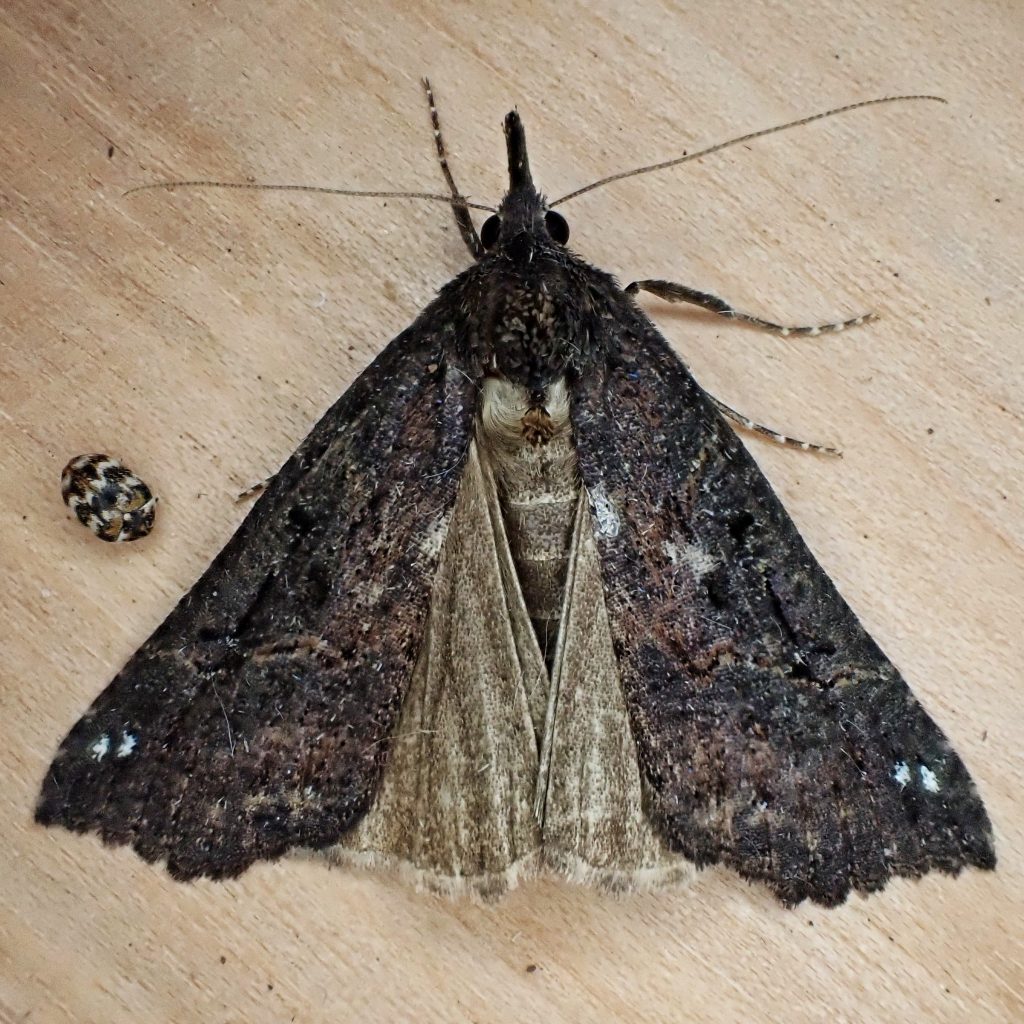
I assume the “decoration” refers to the more lightly colored portion of the wings? Seems different to me than most moths, at least.
It’s possible, but ‘decorata’ doesn’t mean decoration. It means elegant/graceful/beautiful. Those white apical dots are only on the males, and JB Smith, the describer of the species, mentions that they are sexually dimorphic. The females are actually more interestingly patterned. What he doesn’t mention is why he chose decorata.